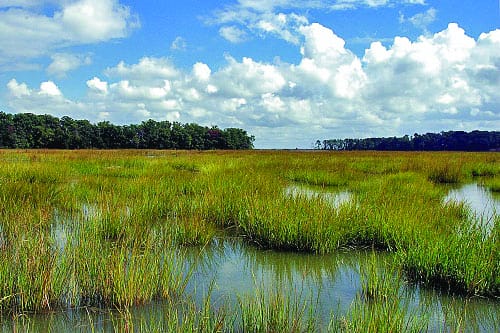Orbit shift led to ancient methane increase
Research suggest that methane increases are natural, not man-made

An investigation into the mysterious rise of methane levels in the atmosphere over the past 5,000 years has suggested its causes are natural, not anthropogenic.
Joy Singarayer at the University of Bristol and colleagues found the Earth’s rotation, and not agriculture, is likely to be to blame for the rise in atmospheric methane concentration in an interglacial age known as the Holocene, which began around 10,000 years ago. The study undermines suggestions that humans and our agricultural activities were alone sufficient to influence these concentrations before the industrial era began.
Methane is a greenhouse gas that can hang around in the atmosphere for up to 15 years. Levels of atmospheric methane have increased by approximately 150% over the last past two centuries as a result of human activity, such as agriculture, coal mining, and the automotive industry.
Over the latter half of the Holocene, the concentration of methane in the atmosphere rose from 550 to 700 parts per billion by volume. Whether this increase was caused by human activity too, in the form of early rice cultivation and biomass burning, has been the subject of much debate. Methane measurements taken from Greenland ice cores suggest the rise might have natural causes instead, such as increased tropical and wetland emissions in response to the warmer Holocene conditions.
In an attempt to show how the increase might have been provoked by natural causes such as these, Dr Singarayer and colleagues reconstructed the ice core record using models of methane emissions from wetland and atmospheric concentrations caused by natural mechanisms over the last 130,000 years.
The results, published in Nature, matched the methane measurements from the ice cores, indicating the increase in methane levels that began mid-Holocene were a result of the Earth’s orbit, alongside increased methane emissions from wetlands in the Southern Hemisphere, particularly South America, caused by weather patterns provoked by small shifts in the Earth’s rotational axis. Most importantly, the findings capture the pattern of decline in methane emissions in the first 5,000 years of the Holocene that preceded the increase in the later half of the period. The team believes the change in methane levels between these two halves is a result of differences between the size and rate of the Sun’s solar radiation, along with a lack of glacial ice in the Holocene period.
Though the findings suggest we ought not to point the finger at early agriculture for a rise in methane concentrations before the industrial era, there are still concerns about how the feedback of methane in the atmosphere may amplify global warming. In light of this, further research is needed to investigate methane cycles so that we can better understand the release of methane and its involvement with global warming.








